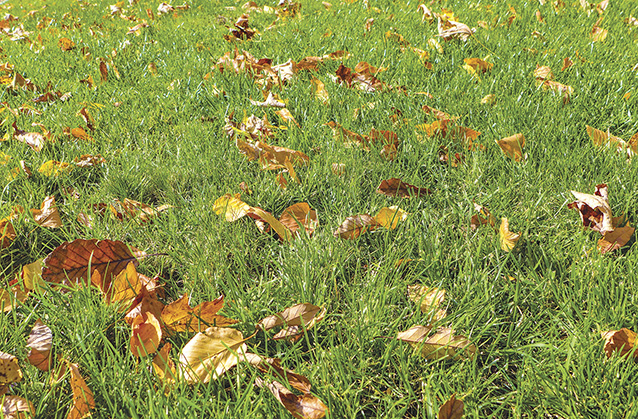Pristine, snow-covered landscapes can be wonders to behold. While that blanket of white is idyllic, a lawn’s delicate blades may be paying a hefty price beneath the cold, heavy piles of snow.
Snow plows push salt and sand up on the grass while subterranean animals like mice and moles dig burrows beneath piles of snow as they try to find food and stay warm. Such conditions are not favorable for thriving landscapes. When the spring thaw arrives, lawns may be in dire need of some TLC. The following techniques can mitigate winter-related lawn damage.
• Clear out debris. Remove any scattered leaves, branches and other debris that has been strewn across the property due to storms or snow-laden trees. This will give you a clean canvas to work on.
• Dry out snow mold. The Family Handyman says snow mold is a cold-season fungus that causes gray-colored circles or patches on the lawn where there has been snow. To alleviate snow mold, rake the lawn to loosen matted grass and facilitate the drying-out process.
• De-thatch the lawn. Heavy snow can compress the grass and cause some of it to die off. De-thatching helps to remove dead grass blades and separate any matting. This enables water, nutrients and air to reach the lawn’s roots more effectively. Thinning out old organic matter also helps encourage new growth.
• Aerate the soil. Coupled with dethatching, aeration involves loosening the soil or poking holes to allow nutrients to move freely to the roots.
• Kill weeds before they spread. Weeds may be the first to start growing when the weather begins to warm. Address them promptly by manually pulling them or applying an herbicide.
• Overseed the lawn. Chances are there are some bare spots that have formed over the winter. Overseeding can help to fill in the lawn. Make sure that frosts are largely a thing of the past and soil temperature is around 50 F to 60 F before seeding. Water daily until grass fills in.
• Apply nutrients. Fertilizer and compost can restore nutrients to the lawn that may have been used up over winter. A soil test at a nearby horticultural center can tell you which nutrients are needed, according to the Chemistry Cachet, a guide to using chemistry secrets for healthy living, beauty, cleaning, and gardening.
Lawns can be restored to their pre-winter glory after some sweat equity and about five to six weeks of consistent sunshine and warm weather.





Leave a Comment
Your email address will not be published. Required fields are marked with *